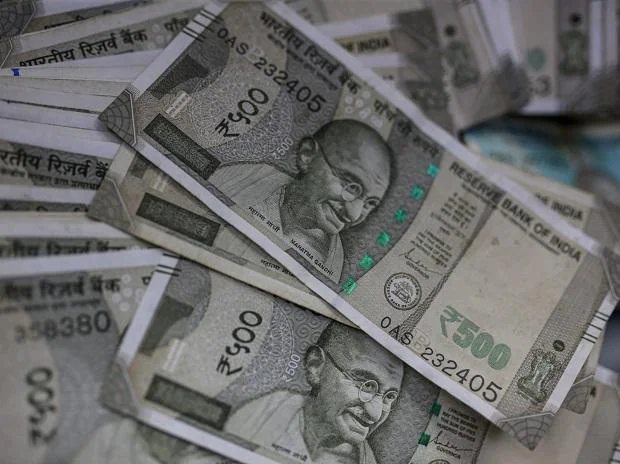[ad_1]
After plunging to a new low against the dollar in early hours of trade on Monday, the rupee staged a smart recovery owing to intervention by the Reserve Bank of India (RBI) and dollar sales by banks on behalf of corporate entities, said dealers.
The rupee closed at 82.32 per dollar on Monday, almost flat versus the previous close of 82.33. In opening trades, however, the domestic currency weakened to a new low of 82.72 per dollar, breaking past the previous intraday low of 82.42.
The rupee has depreciated 9.7 per cent against the dollar so far in 2022.
The rupee’s weak performance in the initial leg of trade was owing to data showing unexpectedly strong US labour market conditions. This strengthens the Federal Reserve’s case to continue raising rates to tame high inflation.
The US dollar index jumped to 112.80 earlier in the day against 112.06 at 3:30 pm IST on Friday.
According to the CME FedWatch Tool, 78 per cent of traders in Fed funds futures are now pricing in a 75-bps rate hike by the US central bank in November. The Fed has hiked rates by 300 bps so far in 2022, leading to immense strength in the dollar and weakness in emerging market currencies like the rupee.
So far in 2022, the US dollar index has gained 18 per cent, rising to 20-year highs.
The rapid pace of the rupee’s fall in early trades on Monday left traders speculating about whether the domestic currency would head towards the 83-mark. However, the RBI’s dollar sales amid thin trading volumes helped the local unit script a turnaround.
Trading volumes were low as US markets were shut for Columbus Day. The inflows on account of corporate entities looking to invest in India further helped the rupee.
“The Indian rupee pared opening losses on possible central bank intervention and corporate inflows. Recovery in domestic equities and lower crude oil prices also supported the rupee during Monday’s session,” HDFC Securities research analyst Dilip
Parmar said.

Intervention view
According to analysts, the RBI has been intervening through dollar sales on a regular basis and curbing excessive volatility in the rupee. However, they felt the central bank was not creating a strong defence around any levels.
With the rupee taking quite a while to sustainably weaken past the 80-mark after hitting that level in mid-July, the perception is that the RBI had extended firm protection, dealers said. RBI data shows that the central bank sold (net) $19.1 billion in the spot market in July against net sales of $3.7 billion a month ago.
It is perhaps not surprising that the rupee fared better than 11 emerging market currencies during July-September.
The domestic currency weakened 2.9 per cent against the dollar during the period.
So far in the current quarter, the rupee has suffered more versus the dollar compared to 14 emerging market currencies. Only the Russian ruble weakened more.
In the October-December quarter so far, the rupee has weakened 1.2 per cent.
“If you look at the performance, say, over the last one-and-a-half months, the rupee is in the middle of the pack. There’s no perceptible sense of any underperformance or outperformance against the dollar. It’s broadly in the middle of the pack,” said Rahul Bajoria, managing director (MD) and chief India economist, Barclays.
“However, during the last 15 days, the underperformance has been high. One could argue that it’s a function of oil prices, which have mean-reverted closer to $100 per barrel. On a net basis, there could be an element of the RBI taking its hands off a little bit. This could be a more tactical change in the intervention behaviour rather than a long-term change in strategy,” he said.
The RBI’s foreign exchange reserves were at $532.66 billion as on September 30, the lowest since July 2020.
[ad_2]
Source link



